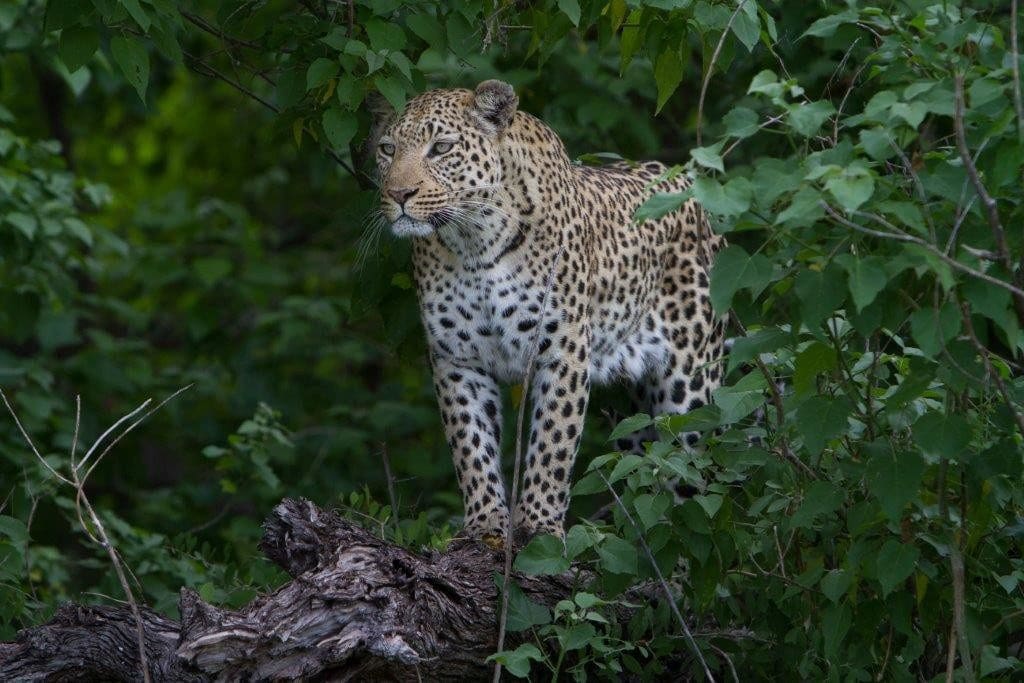 Covington Travel believes it’s important for luxury travel advisors to personally experience the products and destinations that he or she recommends to their clients. Not only does this give the advisor intimate knowledge of the place that they can share, but they often make valuable industry contacts that translate into Covington clients receiving VIP treatment when they visit. In pursuit of continuing education, luxury advisor Karen Kilyk recently went on safari in the Central Kalahari Game Reserve, the Okavango Delta and Linyanti region of Botswana, as well as Victoria Falls in Zambia. Yes, it’s a sacrifice, but that’s the kind of dedication Karen has to her job. The following is Karen’s report:
Covington Travel believes it’s important for luxury travel advisors to personally experience the products and destinations that he or she recommends to their clients. Not only does this give the advisor intimate knowledge of the place that they can share, but they often make valuable industry contacts that translate into Covington clients receiving VIP treatment when they visit. In pursuit of continuing education, luxury advisor Karen Kilyk recently went on safari in the Central Kalahari Game Reserve, the Okavango Delta and Linyanti region of Botswana, as well as Victoria Falls in Zambia. Yes, it’s a sacrifice, but that’s the kind of dedication Karen has to her job. The following is Karen’s report:
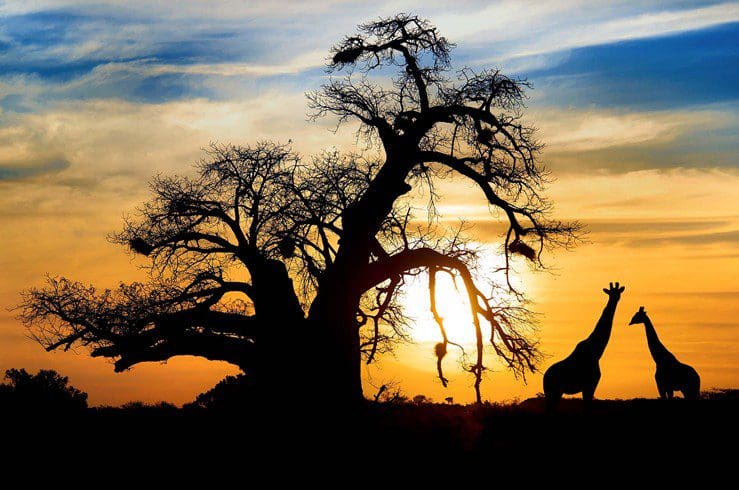 In March, I visited and inspected five safari camps in Botswana operated by Wilderness Safari in the Central Kalahari Game Reserve, one of the largest conservation areas in the world, and the unique Okavango Delta, a wondrous wetland in the middle of a desert.
In March, I visited and inspected five safari camps in Botswana operated by Wilderness Safari in the Central Kalahari Game Reserve, one of the largest conservation areas in the world, and the unique Okavango Delta, a wondrous wetland in the middle of a desert.
Botswana is politically stable and one of the most prosperous countries in Africa. It is 45% conservancy and has outlawed hunting. Anyone caught shooting a rhino can get the death penalty. Botswana is known to safari connoisseurs as a remote and pristine wilderness with well-managed wildlife reserves. Wilderness Safari provided a perfect combination of secluded yet sophisticated lodging, expertly guided game viewing activities, and highly personalized service.
To enjoy this remote part of the world and be amongst the few in a large area, you have to do some traveling. I flew 17 hours from Washington Dulles to Johannesburg, South Africa and spent the night in a hotel. The next day was a two-hour flight to Maun, Botswana, then bush plane to Kalahari, followed by 25-minute drive.
What to Expect at Safari Camps in Botswana
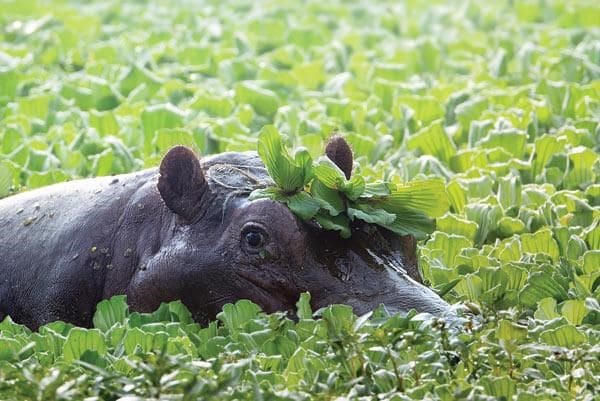
Wilderness Safari camp styles are categorized into three levels. I saw five different camps of varying budget and level. Classic camps are the least expensive and have a laid back, traditional safari style. These luxury tented camps are a favorite for many people. I visited three Classic camps: Kalahari Plains, Toka Leya, and Xigera. Classic Plus camps are a bit more sophisticated and plush. I visited Dumatau. All meals at Classic and Classic Plus camps are buffet style, but the overall service quality remains exceptional. They did a great job providing vegetarian and most of the time vegan options. Gluten free or any other special requests are not a problem.
Premier camps are the top of the luxury line with chic décor, higher staff to guest ratio, plated table service meals, and an on-site spa. The rooms are much larger and have stocked minibars, Africology toiletries, hair dryers and even hand weights and yoga mats. The Premier camp I stayed in was Kings Pool. Premier camp luxury extends to game drives as well. They include the best guides, individual jeep seats with springs and seat pockets (rather than bench seats), and nice ponchos in case of rain. Karen’s Tip: Bring your own binoculars, as they are not provided, even at premier camps.
Wilderness Safaris operates additional safari camps in Botswana. According to our guide, Vumbura Plains and Little Vumbura, Mambo and Chitabe are best bets for seeing the most wildlife in all seasons.
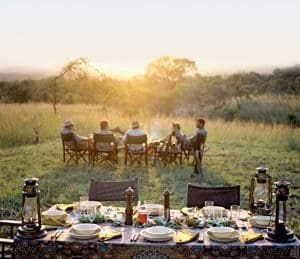
The food was plentiful and excellent at all of the camps, whether it was plated or buffet. I asked for and received many recipes! Wine, as well as any other drink guests wanted was included. At all camps, sundowners with snacks are done each night somewhere in the bush before returning to camp for dinner. Boma evenings are generally held on Monday nights with traditional foods served (ox tail, etc.) and singing and dancing in the tribal tradition by staff. Our night was at King’s Pool Premier camp and it was exceptional with everyone joining in.
Wilderness Safari camps always have a “Bush Buddy” at each camp to entertain the kids so parents can spend some time on their own. Family units are available in all camps. They are very large and comfortable with two bedrooms and two bathrooms.
All camps are accessed via Maun (pronounced ma-OON), Botswana. Wilderness Safaris handles all elements of travel and transfers with their own bush planes, jeeps and camps, making for good communication and seamless travel. Karen’s tip: A trip to the safari camps in Botswana is not for those with mobility or back issues. It is a very bumpy ride and climbing in and out of the safari jeep can be a challenge for those without full movement. One exception could be Toka Leya outside Livingston, which is a bit more accessible. Toka Leya camp in Zambia also happens to be the only Wilderness Safari camp with Wi-Fi service.
Because modes of transportation have limited space, luggage has to be a small soft-sided duffel without a hard frame or a pullout handle. I packed only four mix-and-match outfits and the camps do laundry. Less is best! Karen’s tip: You’ll also want a small backpack for carrying water and your camera on the game drives.
When and Where To Go
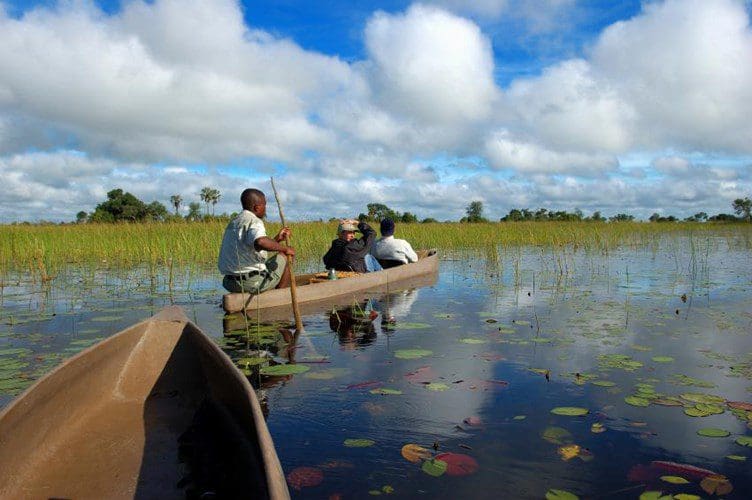
To choose a safari in Botswana, you need to decide the safari type – land, water or combination – as well as the style of camp that appeals to you. For a water camp, two nights is ample; for a land camp three nights is good; to experience a combination of both, I recommend four nights. Karen’s tip: It’s important to be clear on the differences in the camp styles. If your safari experience includes a mix of Classic, Classic Plus and Premier camps, I would generally recommend saving the best for last.
There are benefits to traveling in each season. For the lowest budget, choose a combination camp and go during low season from November 15 through March 15. There are usually six-night specials of any combination of camps during that period, excluding holidays.
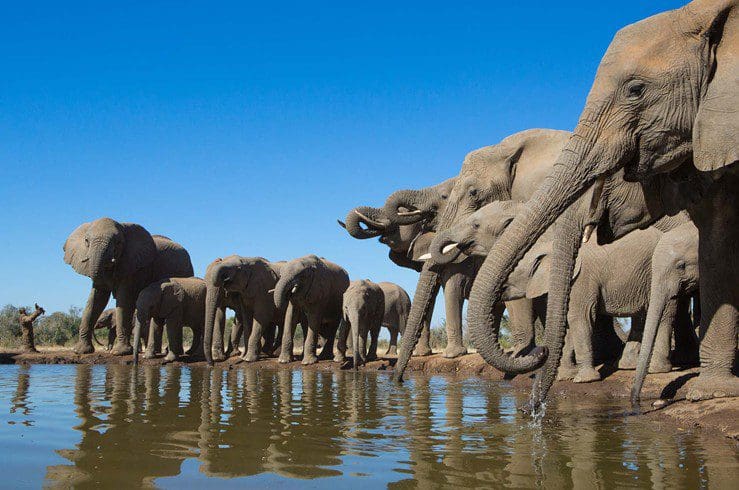
January through March is the rainy season, but Botswana doesn’t get a lot of rain and what rain it does get makes the landscape green. We only saw rain once in early March. The end of green season has moderate temperatures with beautiful light, green background for pictures and plentiful game in the water camps. Karen’s tip: Green season is my preferred time to safari.
In general, high season is June to October; however, this time is considered high season because that is when there is the most demand and not necessarily the best time to visit. Water camps can be restricted to only boating and although they are a birders’ paradise, you won’t see as much game. At land camps, it can be very cold on morning game drives during high season, but the animals are forced to the water and the foliage is bare so it’s easier to find the animals.
This trip was a real privilege and I can’t wait to share more of my experience with clients planning a safari. Please contact me if you’d like to learn more about safari camps in Botswana.
Karen Kilyk is a world-class and world-traveled luxury vacation advisor with a passion for designing exceptional experiences for other travelers. “The difference between ordinary and extraordinary is the little extra and this is what I strive to deliver with every trip. Personal contacts around the world make all the difference when personalizing a trip.”

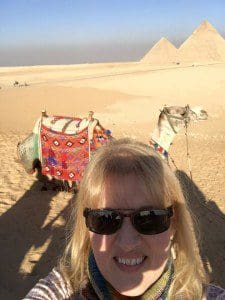





Leave a Reply